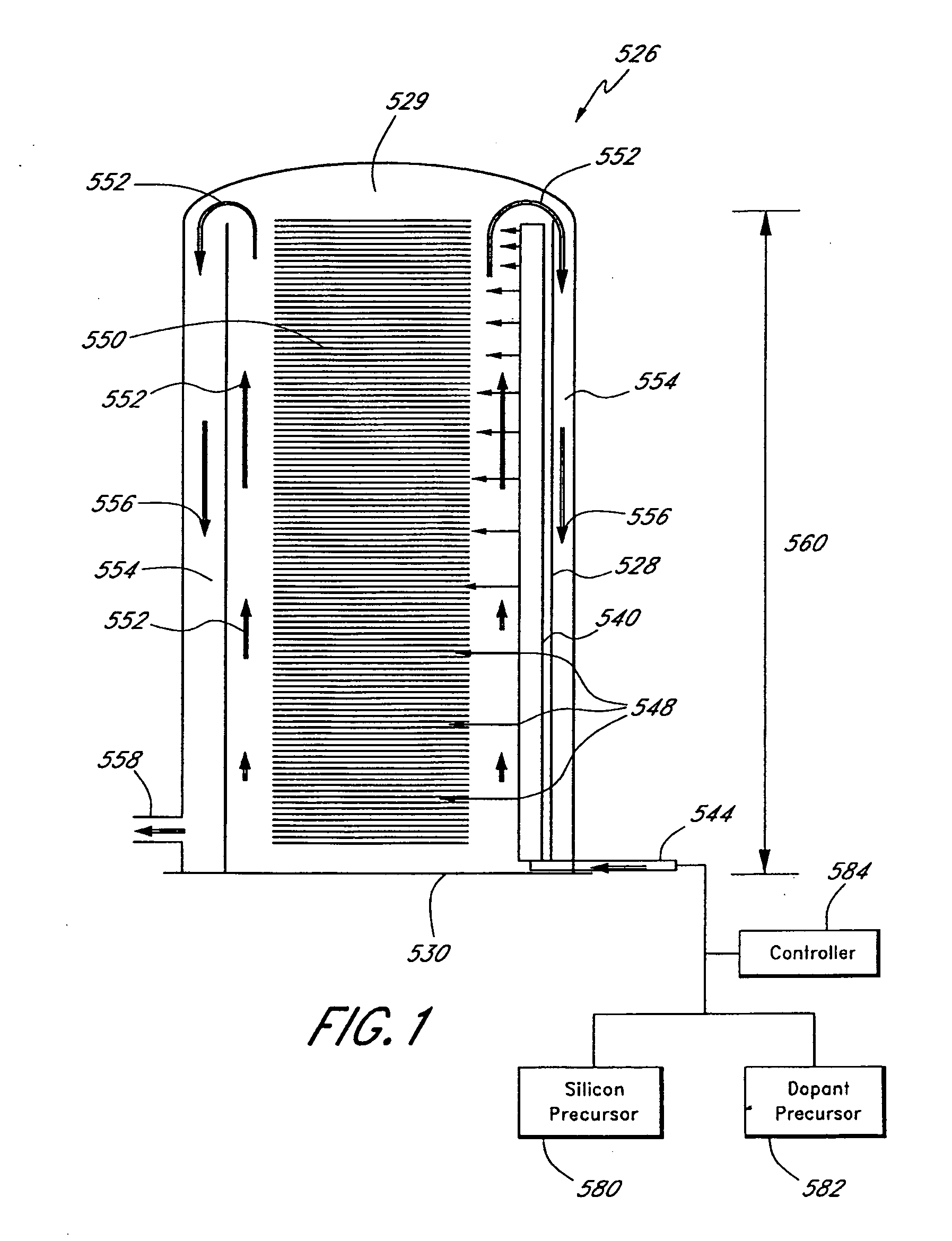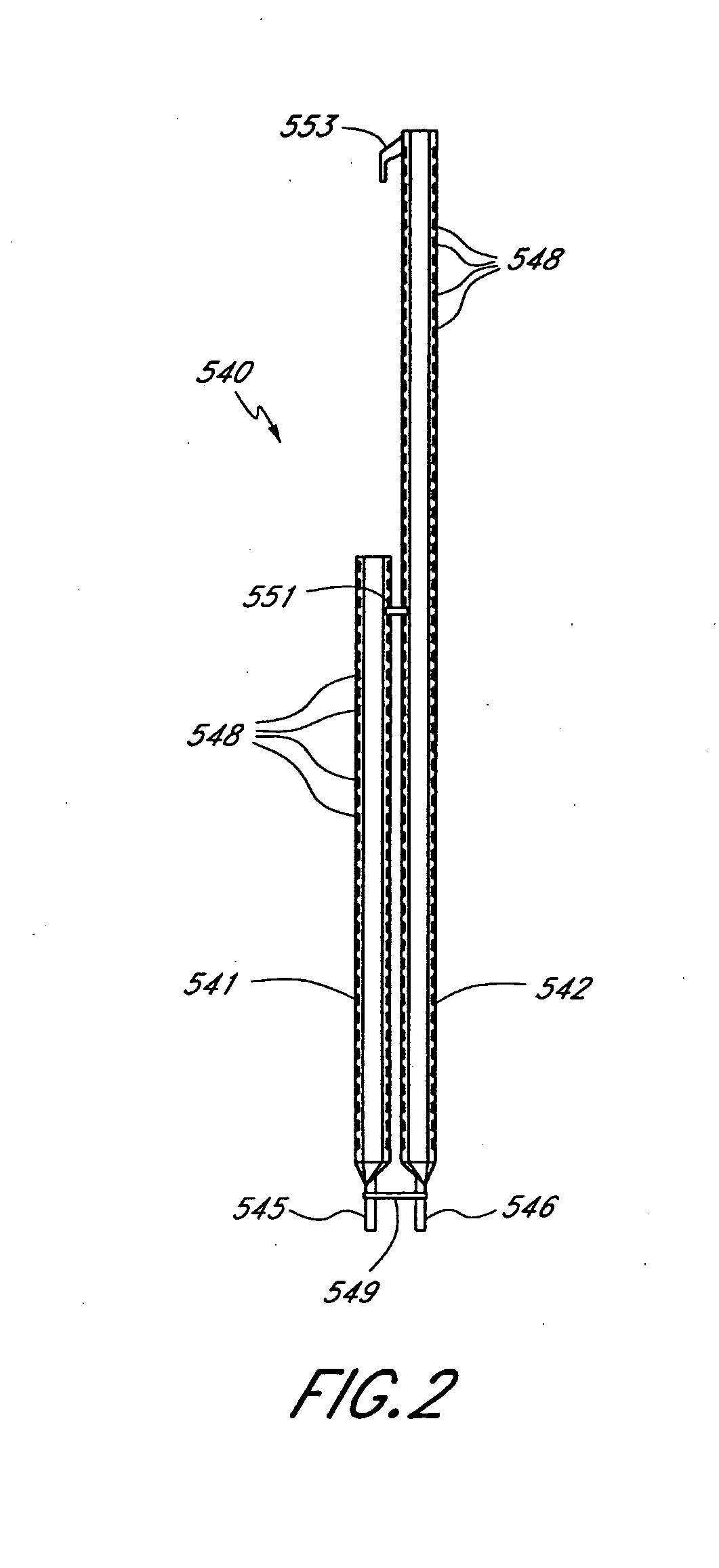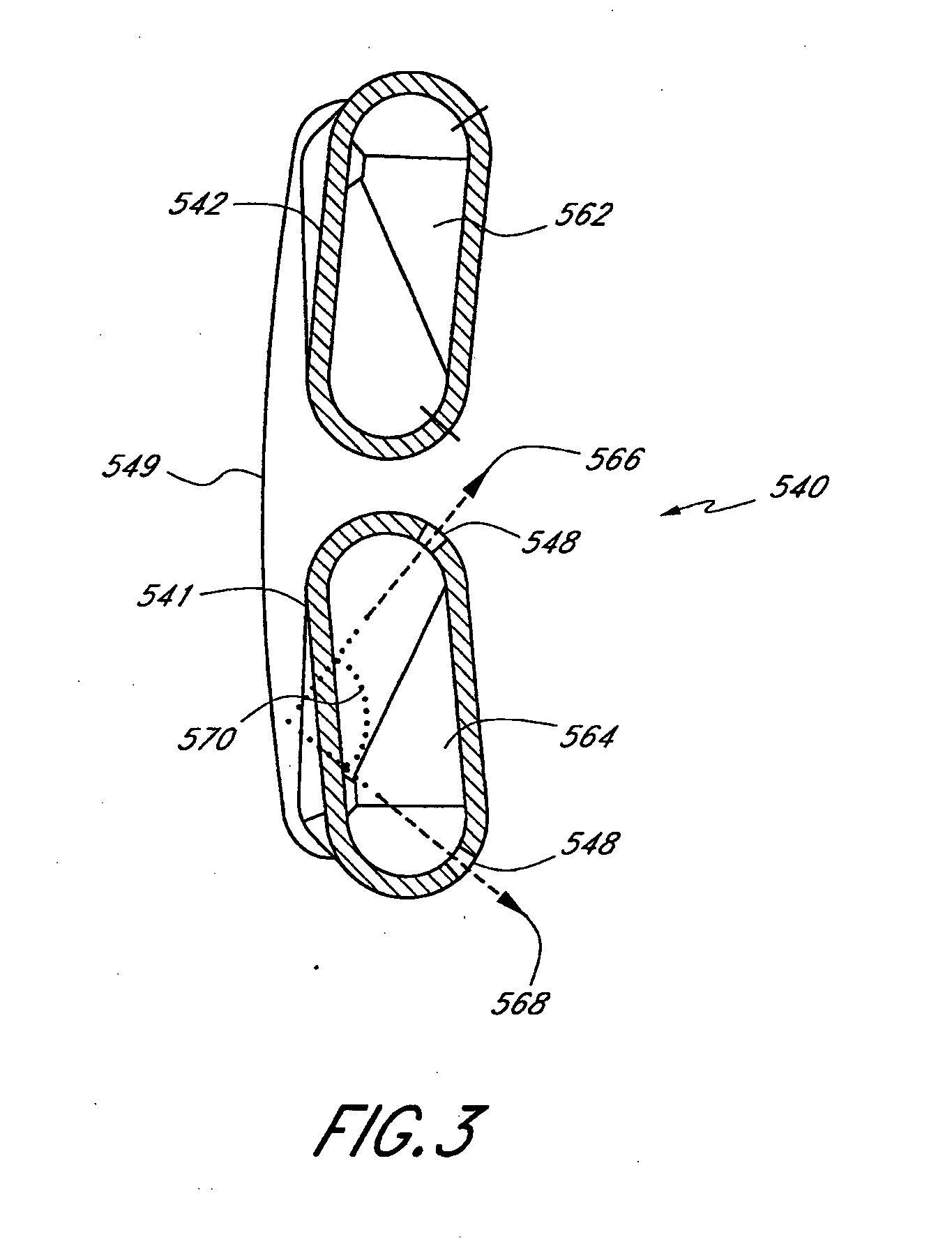Low temperature doped silicon layer formation
a technology of silicon layer and low temperature, applied in the field of forming doped silicon layers, can solve the problems of reducing the film deposition rate, falling to unacceptably low levels, and the rate of falling so low
- Summary
- Abstract
- Description
- Claims
- Application Information
AI Technical Summary
Problems solved by technology
Method used
Image
Examples
example 2
[0076] A doped silicon layer was deposited on a batch of substrates in a batch reactor. The reactor was an A412™ from ASM International N.V. of Bilthoven, The Netherlands. The process chamber pressure was 200 mTorr and the deposition temperature 450° C. A 60 sccm trisilane flow was mixed with a 1 slm N2 carrier gas flow before introduction into the process chamber and a 60 sccm N2 flow comprising 1% phosphine was used to provide the dopant precursor. The deposition rate was 2.4 Å / min and the phosphorus incorporation 2.1×1020 atoms / cm3. The deposition formed doped silicon films having a thickness of about 150 Å or less and, more preferably, about 100 Å or less.
Example 3
[0077] A doped silicon layer was deposited on a batch of wafers in a batch reactor. Seventy-five product wafers having a diameter of 300 mm were held on holder rings in a wafer boat in the process chamber of an A412™ reactor. The trisilane was flowed at 400 sccm, PH3 (1% in N2) was flowed at 400 sccm, N2 was flowed a...
example 3
[0078] A doped silicon layer was deposited on a batch of wafers in a batch reactor. Seventy-five product wafers having a diameter of 300 mm were held on holder rings in a wafer boat in the process chamber of an A412™ reactor. The trisilane was flowed at 400 sccm, PH3 (1% in N2) was flowed at 400 sccm, N2 was flowed at 200 sccm into the process chamber. The process chamber pressure was 200 mTorr and the temperature was 500° C. A deposition rate of 45 Å / min was achieved and the resulting film had a RMS roughness of 3.25 nm.
[0079] It will be appreciated that, while described with reference to various illustrated embodiments for ease for description, changes to the illustrated embodiments are possible. For example, the depositions can be performed in a reactor without a liner. In some arrangements, in such a reactor, process gases can be flowed into the reactor chamber at one vertical end and exhausted from the reactor at the opposite vertical end. In other arrangements, process gases ...
PUM
| Property | Measurement | Unit |
|---|---|---|
| Temperature | aaaaa | aaaaa |
| Temperature | aaaaa | aaaaa |
| Temperature | aaaaa | aaaaa |
Abstract
Description
Claims
Application Information
 Login to View More
Login to View More - R&D
- Intellectual Property
- Life Sciences
- Materials
- Tech Scout
- Unparalleled Data Quality
- Higher Quality Content
- 60% Fewer Hallucinations
Browse by: Latest US Patents, China's latest patents, Technical Efficacy Thesaurus, Application Domain, Technology Topic, Popular Technical Reports.
© 2025 PatSnap. All rights reserved.Legal|Privacy policy|Modern Slavery Act Transparency Statement|Sitemap|About US| Contact US: help@patsnap.com



